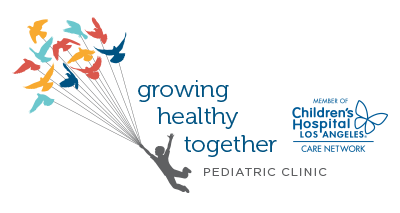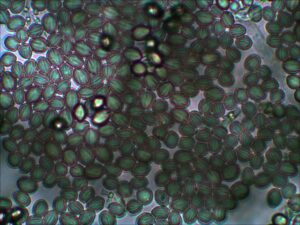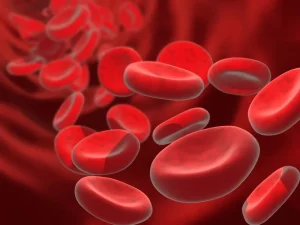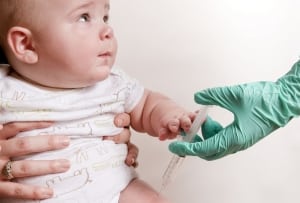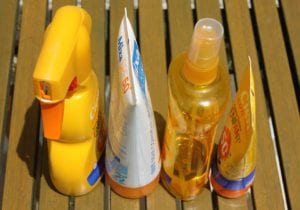 In the summer months, sun safety is most important as families spend significantly more time outdoors. Summer is a time for making school vaccine appointments, for increased bites and stings, and for skincare! The sun’s rays can be extremely damaging to our bodies’ largest organ, and we are all at risk for sun damage when spending time outside. In fact, skin damage can occur in as little as 15 minutes. Read on to learn more about skin damage, how to protect yourself, and how to choose a sunscreen that is good for your kids and the environment!
In the summer months, sun safety is most important as families spend significantly more time outdoors. Summer is a time for making school vaccine appointments, for increased bites and stings, and for skincare! The sun’s rays can be extremely damaging to our bodies’ largest organ, and we are all at risk for sun damage when spending time outside. In fact, skin damage can occur in as little as 15 minutes. Read on to learn more about skin damage, how to protect yourself, and how to choose a sunscreen that is good for your kids and the environment!
Skin Damage
Contrary to what you might think, most skin damage occurs in childhood. Children are not as concerned about sunscreen application or keeping covered. Adults must take our responsibility seriously and do what we can to protect little ones. Long term effects of sun damage include wrinkling, freckling, toughening, and cancer. Skin cancer is a very real threat to us later in life. Practicing good sun safety in youth can decrease your chances of developing skin cancers as an adult.
Though this should be common sense – people of all colors need to practice sun safety. Dark-skinned people may be less sensitive to the sun, however, we are all at risk for skin damage in sun rays. And we should all use sun protection.
If you or your child has a lot of marks, moles, and/or freckles on their skin, it is important that you see a dermatologist yearly.
Sunburns Can Cause:
- Blistering (and, in extreme cases, scarring)
- Warm and painful skin
- Dry skin
- Headache
- Fever
- Chills
- General illness
When to Contact your Provider
- Your infant has a fever with a temperature over 100.7 ° F, or your child has a temperature over 103.5° F and doesn’t respond to fever reducers like Tylenol or Motrin
- Your child is blistered
- The blisters are infected
- They are experiencing more pain than expected for a sunburn
Infants Under 6 Months
Keep infants under the age of six months out of the sun. Babies are at particular risk of skin damage due to their sensitive, thin skin, and underdeveloped immune systems. When spending time outdoors, be sure your infant is under a tree, umbrella, canopy, stroller, etc. Use lightweight clothes that cover all of your baby’s extremities and get a good, wide-brim hat.
Also, keep sunscreen in your trusty diaper bag at all times. Sunscreen for infants is available from most grocery, drug, and recreational stores. You can test a small area on the back of your infant’s hand if you’re worried about rashes or adverse reactions to sunscreens. If your baby does get a burn, use a cold compress to soothe burned skin.
Tips for Sun Safety
- Use sunscreen! You should have an endless supply of sunscreen during the summer. Be
sure to use SPF 15 and above. Zinc oxide can be used as well. - Apply 30 minutes before going outside to give it a chance to work into the skin.
- Reapply! We don’t always know when our sunscreen has worn off, but a good rule of thumb is to reapply every 2 hours. Set an alarm.
- Test sunscreens on a small area first. Some kids and adults may have mild allergic reactions to
sunscreens, so find the one that works best for you and your family. - Rub your sunscreen in well. Develop a good technique that helps you to cover all areas.
- Cover up with lightweight clothing. Cotton clothing is breathable on hot summer days. You can
also purchase clothing with cooling tech in them (i.e. wicking). If you’ll be working in the sun or
spending a lot of time in the sun, be sure to wear long sleeves, pants, and hats that are
breathable. - When in the water, use swim clothing to protect from sun damage.
- Find the shade. During the sun’s peak hours (10 am – 4 pm), find ways to spend time in the
shade. This means using canopies, umbrellas, trees, and large hats for protection. Sun rays are reflected off of surface areas like sand, water, concrete, or light-colored surroundings. You aren’t always protected in the shade! - Use sun protection on cloudy days, too. Sun rays still come through cloud layers and reflect off
of surfaces and water vapor. Follow your same sun protection routines on cloudy days, too. Those at higher elevations are exposed to more sun rays, too. - Get UV-protected glasses. Sunburns are possible on eyeballs, too.
- Set a good example by practicing great sun safety for yourself.
- Teach your kid good sunscreen habits. Employers and people working with children don’t always remember to remind kids about sunscreen.
Sunscreen
Choose a “broad-spectrum” sunscreen that protects against different types of sun rays (UVA and UVB).
Research does not support any added protection or decreased skin damage for SPF over 50. Rub it in well. Take note of expiration dates. Sunscreen only has a shelf life of under 3 years, but this time can be decreased if exposed to high temperatures. Oxybenzone is a chemical agent in many sunscreens that may have effects on hormones. This may not be true for all individuals, and some sunscreen is better than no sunscreen. Still, it’s always important to read the label.
In addition, sunscreens are widely known to damage ocean biota including coral reefs. Oxybenzone and octinoxate are known to cause coral bleaching. Use an eco-friendly sunscreen without harmful products in order to protect yourself, your child, and the planet. The Environmental Working Group has a great page on how to find good, eco-friendly sunscreen options! Click over to their website for more information.
Soothe Your Sunburn
- Drink plenty of fluids. Burns cause you to lose fluid. Drink water, juice, tea, or electrolyte drinks to decrease some discomfort.
- Aloe. Use aloe or lotions containing aloe to soothe and moisturize skin.
- Cool compresses can help to cool down the skin. Apply a wrapped ice pack or a wet cloth to the
sunburned area. - Take a cold shower/bath. (Use apple cider vinegar, oatmeal, milk or yogurt, black or mint tea, witch
hazel, lavender or chamomile essential oils, or baking soda in the bath to soothe the burn. Avoid using soap or perfume as they may dry out the skin even more.) - Apply petroleum jelly or Aquaphor to keep your skin moisturized. You can also use coconut oil or vitamin E oil. Don’t use oils in the sun as they will definitely cause you to burn.
- Stay out of the sun and cover burns, peeling skin, and blisters if you must be outdoors.
- Avoid picking or peeling sunburns, in case of increased damage or infection.
- Use pain medication like acetaminophen (Tylenol), for bad burns.
- Use topical medications like lidocaine can help to numb the skin and relieve pain. Don’t use topical lidocaine on children aged 6 months and under.
Finally, for questions or concerns about sun safety, please respond to this blog post or contact us!
